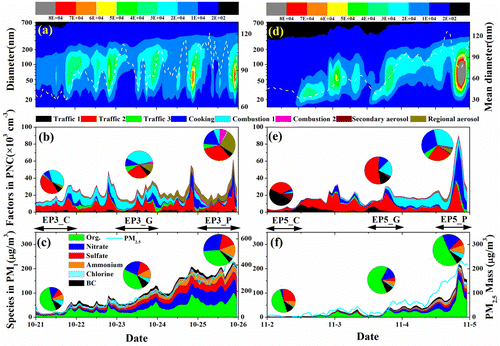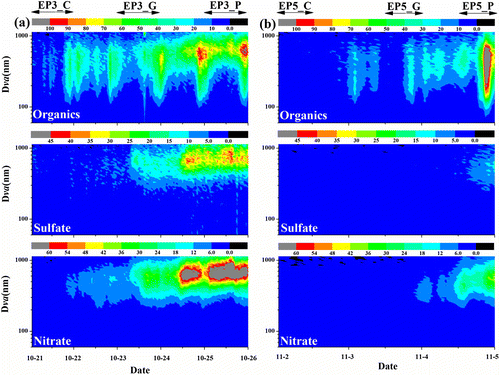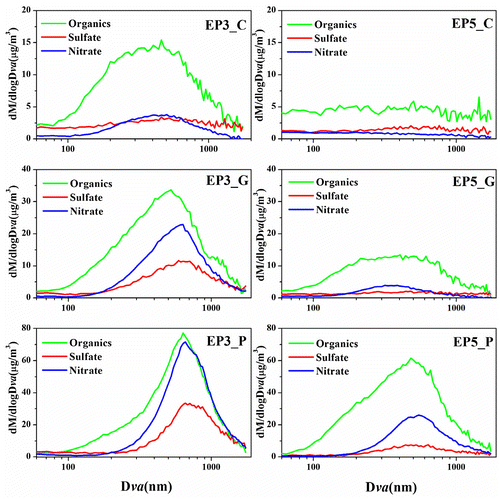Figures & data
Fig. 1. The time series of (a) temperature (T) and relative humidity (RH), (b) wind speed (WS) and wind direction (WD), (c)evolution of PNSD and mean diameter (circles) of the dominant mode, (d) particle number concentrations in different modes and (e) the mass concentration of PM2.5 and PM10 and visibility during the measurement period. The APEC summit period and six pollution episodes (Ep1–Ep6) are marked for further discussion.
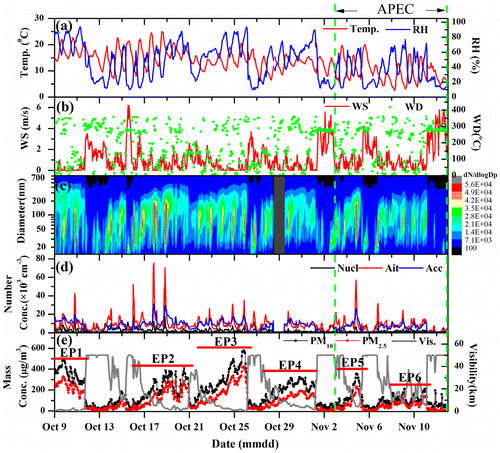
Fig. 2. Average particle (a) number, (b) surface, (c) volume size distribution and (d–h) average mass size distributions of chemical components in PM1 measured before and during the APEC summit. The median diameters (MD) and GSD for the mass size distributions of chemical components in PM1 are also shown.
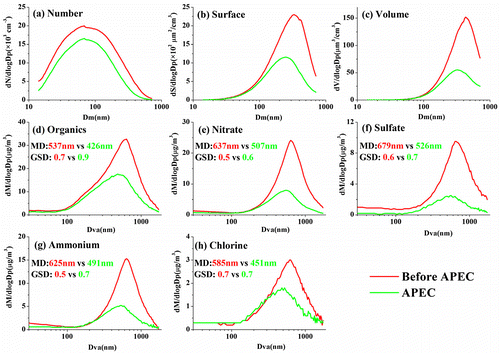
Table 1. Summary of average meteorological parameters, particle matter and gaseous species, PNC in different modes, PSC, particle volume concentration (PVC) and mass concentrations of PM1 species for the entire study, before and during APEC, and also the change percentages during APEC.
Fig. 3. Diurnal profiles of the total PNC, PNC in different modes and mass concentrations of PM1 species measured before and during the APEC summit.
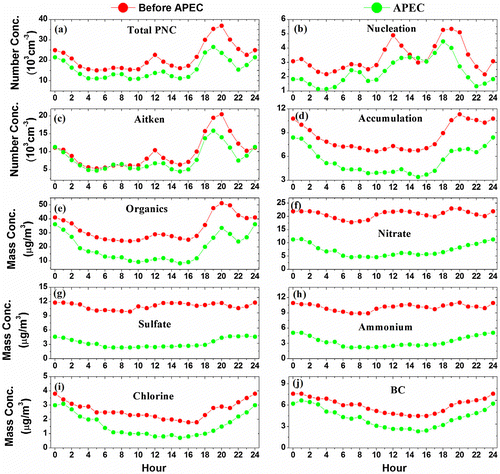
Table 2. The PMF revolved factors for particle number concentration (PNC) for the entire study, before and during APEC, and also the change percentages during APEC.
Fig. 4. Normalized feature profiles for particle number and volume size distribution (left panel) and time series (right panel) of eight PNC factors resolved by the PMF. Also shown in the right panel are the time series of external tracers including black carbon (BC), Chlorine (Cl−), O3, SIA (sulphate + nitrate + ammonium) and two organic aerosol components (cooking (COA) and (BBOA)). The two pie charts show the average source composition of PNC measured before and during the APEC summit, respectively. The correlation coefficients between PNC factors and external tracers measured before and during APEC are also shown in the figure.
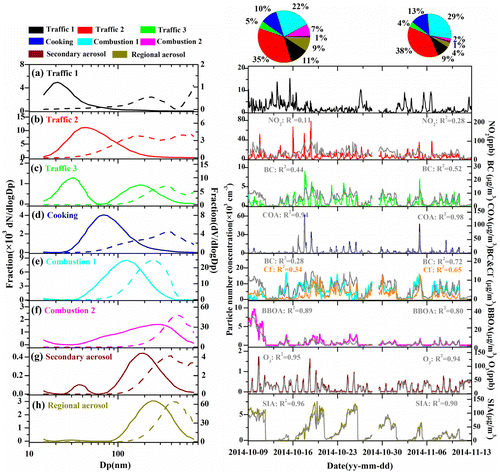
Fig. 5. Diurnal profiles of the number concentrations of PNC factors measured before and during the APEC summit.
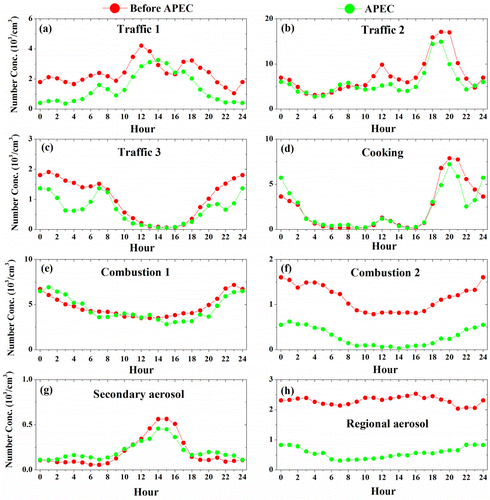
Table 3. Correlation coefficients between PNC factors source profiles and external tracers.
Fig. 6. Temporal evolutions of (a, d) PNSD and mean diameter (white dashed curve), (b, e) particle number concentration (PNC) factors and (c, f) PM1 species during the pollution episodes on 21–25 October and 2–4 November. The pie charts show (b, e) the average source contribution of PNC and (c, f) the average chemical composition of PM1 for each stage.
